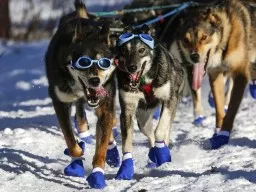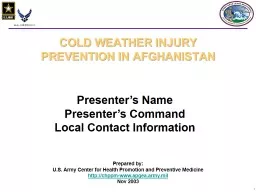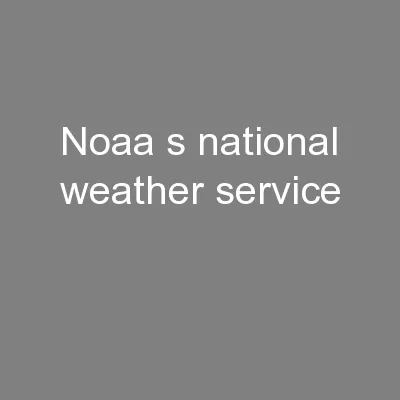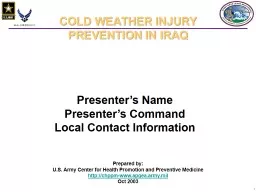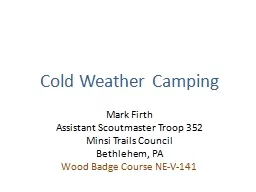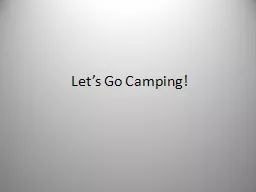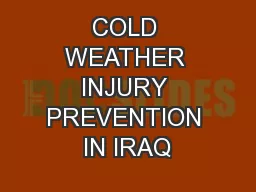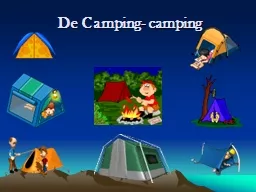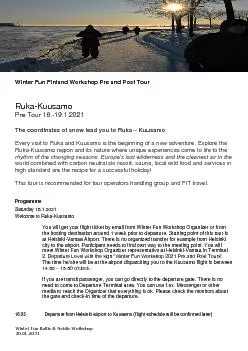PPT-WINTER CAMPING CAN BE FUN... ...When You’re Prepared TEST YOUR COLD WEATHER KNOWLEDGE
Author : trish-goza | Published Date : 2019-10-31
WINTER CAMPING CAN BE FUN When Youre Prepared TEST YOUR COLD WEATHER KNOWLEDGE The majority of hypothermic deaths occur between 35F and F Water conducts heat times
Presentation Embed Code
Download Presentation
Download Presentation The PPT/PDF document "WINTER CAMPING CAN BE FUN... ...When You..." is the property of its rightful owner. Permission is granted to download and print the materials on this website for personal, non-commercial use only, and to display it on your personal computer provided you do not modify the materials and that you retain all copyright notices contained in the materials. By downloading content from our website, you accept the terms of this agreement.
WINTER CAMPING CAN BE FUN... ...When You’re Prepared TEST YOUR COLD WEATHER KNOWLEDGE: Transcript
Download Rules Of Document
"WINTER CAMPING CAN BE FUN... ...When You’re Prepared TEST YOUR COLD WEATHER KNOWLEDGE"The content belongs to its owner. You may download and print it for personal use, without modification, and keep all copyright notices. By downloading, you agree to these terms.
Related Documents

